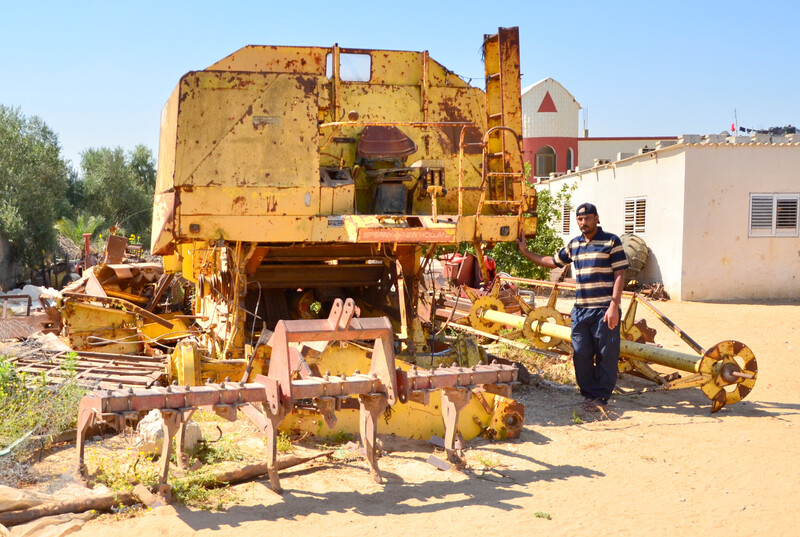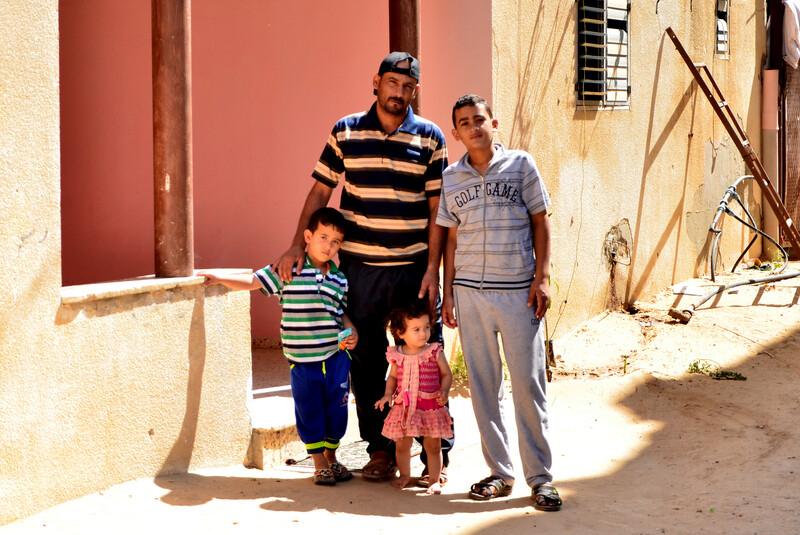The Electronic Intifada Gaza Strip 10 June 2015

Raed el-Farra was shot while operating a combine harvester last month.
Raed el-Farra’s combine harvester had broken down. He was trying to replace some of its parts when Israeli soldiers fired on him. Suddenly, “there was blood dripping from my left hand from near my left eye,” he said.
Although el-Farra has been involved in wheat and barley farming across Gaza for almost 20 years, the incident during May was the first time that his combine harvester came under attack.
Fortunately, el-Farra was able to rush from the scene of the attack — along Gaza’s northern boundary with Israel — to al-Shifa, Gaza’s largest hospital.
The bullet with which he was hit disintegrated inside his hand. The use of such weapons is illegal under international humanitarian law.
“Worried”
El-Farra told The Electronic Intifada that he did not regard his attack or the injuries he has sustained as “normal.” He suggested that the Israeli soldiers were probably aware that he was doing nothing more sinister than trying to make a living when he was attacked.
The farmers with whom he works normally alert the International Committee of the Red Cross and the relevant political authorities when they venture close to the boundary with Israel.
“I am really wondering why this happened,” he said.
El-Farra, a father of eight, has been unable to work since the attack occurred. He still has some shrapnel next to his left eye. He is not able to see clearly with that eye.

Raed el-Farra, seen here with some of his children, has not been able to work since the attack.
“I rely on the harvesting season in order to feed my family,” he said. “I am getting more and more worried, as the Israeli army is starting to open fire not only in the air but also towards us directly while we are working away peacefully.”
His nephew Ibrahim was with him when the attack occurred and was lightly injured. Ibrahim said that 2015 may have been the worst year so far for farmers who enter the “buffer zone” near Gaza’s boundary line with Israel.
Invasions
In February 2013, the Israeli authorities announced that Palestinian farmers could work in that area, provided they kept at least 100 meters away from the boundary. Yet the Palestinian Centre for Human Rights recorded 12 incidents during which farmers were shot at by Israeli soldiers near the boundary during April 2015. Nine individuals — three of them children — were injured as a result.
PCHR also found that Israeli soldiers invaded Gaza’s territory on four occasions in April. Three Palestinians were detained in the boundary area.
Ibrahim said that it was not uncommon for one of the four combine harvesters they use to break down. The machines date from the 1980s and frequently need to be repaired.
“The Israeli siege of Gaza has made our work difficult,” Ibrahim said. Before the siege was imposed in 2007, it was possible to buy spare parts for the combine harvesters at markets. Yet restrictions on imports mean there is now a scarcity.
Pointing to an old combine harvester, Ibrahim said his family had to cease using it so that they could dismantle it and use its spare parts. “We sacrificed this old machine for one that is still functioning,” he said.
Rami Almeghari is a journalist and university lecturer based in the Gaza Strip.





